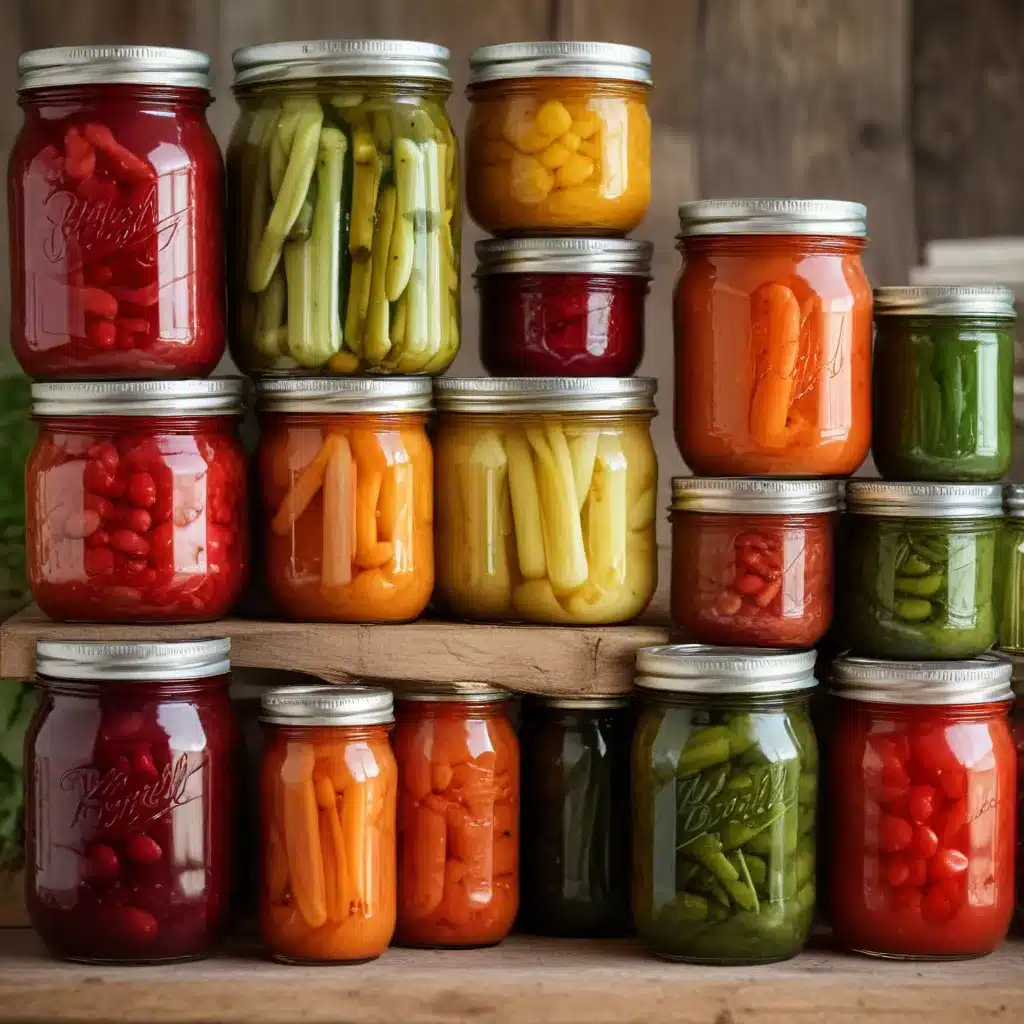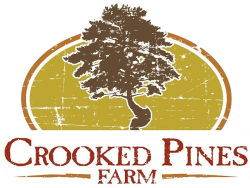
Preserving the Harvest: Canning, Fermenting, and Drying
As the sun-drenched days of summer give way to the golden hues of autumn, gardeners and farmers at Crooked Pines Farm find themselves surrounded by an abundance of fresh produce. From juicy tomatoes and crisp peppers to fragrant herbs and earthy root vegetables, the harvest season is in full swing. But how can we ensure that the flavors and nutrients of this bountiful yield can be enjoyed long after the growing season has ended?
The answer lies in the age-old practices of canning, fermenting, and drying. These time-honored methods not only preserve the flavors of our harvest but also offer a way to reduce food waste, enhance nutrition, and savor the taste of summer all year round.
Canning Techniques
When it comes to long-term food storage, canning is a reliable and rewarding option. There are two primary canning methods: hot water bath canning and pressure canning.
Hot water bath canning is ideal for high-acid foods like jams, jellies, pickles, and tomatoes. This process involves submerging sealed jars in a pot of boiling water, which kills any potential pathogens and creates an airtight seal. The result is a shelf-stable product that can last for up to a year or more.
For low-acid foods such as meats, vegetables, and soups, pressure canning is the safest method. This technique utilizes a specialized pressure canner that reaches temperatures high enough to destroy the botulism-causing bacteria. When done properly, pressure-canned goods can be stored for up to two years.
Properly canned goods should be stored in a cool, dark place, and their seals should be checked before use. With a little practice and attention to food safety, canning can be a rewarding way to preserve the harvest and enjoy the flavors of summer well into the winter months.
Fermentation Methods
Another captivating way to preserve the harvest is through the process of fermentation. This ancient technique not only extends the shelf life of foods but also enhances their nutritional value by introducing beneficial probiotics.
Lacto-fermentation, which involves submerging vegetables in a salt brine, is a simple yet effective method. Sauerkraut, kimchi, and pickled vegetables are all delicious examples of lacto-fermented foods. The process encourages the growth of lactic acid bacteria, which prevent the growth of harmful microbes and give the final product its distinctive tangy flavor.
Another fermented favorite is kombucha, a fizzy, probiotic-rich tea that can be brewed at home. By combining tea, sugar, and a SCOBY (symbiotic culture of bacteria and yeast), you can create a refreshing and gut-friendly beverage that rivals any store-bought version.
Fermentation requires patience and attention to detail, but the results are well worth the effort. Exploring the world of fermented foods can not only expand your culinary horizons but also provide your family with a wealth of health benefits.
Drying and Dehydration
Preserving the harvest doesn’t always have to involve water or fermentation. Drying and dehydration are simple yet effective methods for extending the shelf life of many fruits and vegetables.
Sun drying is an age-old technique that uses the power of the sun to remove moisture from produce. This low-tech approach works particularly well for items like tomatoes, apples, and herbs. For a more controlled environment, you can opt for an oven-drying method, which involves placing thin slices of produce in a low-temperature oven (around 135°F) for several hours.
Investing in a food dehydrator is another excellent way to preserve a wide range of fruits and vegetables. These specialized appliances use warm air circulation to gently remove moisture, resulting in flavorful and shelf-stable dried goods. From crunchy vegetable chips to chewy fruit leathers, a dehydrator can unlock a world of healthy snack options.
Dried and dehydrated foods not only last for months but also require minimal storage space. They make excellent additions to backpacks, lunchboxes, and emergency preparedness kits, ensuring that the flavors of the farm can be enjoyed anytime, anywhere.
Seasonal Produce Preservation
As the growing season progresses, the types of produce available at Crooked Pines Farm will change. Knowing how to preserve the bounty of each season can help ensure that your pantry and freezer are stocked with a diverse array of flavors.
In the summer, the farm is alive with the vibrant colors and aromas of tomatoes, peaches, berries, and herbs. Canning tomato sauce and peach preserves can be a rewarding way to savor these flavors through the winter. Freezing berries and herbs in the peak of their season can also provide a taste of summer long after the harvest has ended.
As autumn approaches, the farm’s offerings shift to include crisp apples, pears, root vegetables, and hearty greens. Drying apple slices and pear chips can create delightful seasonal snacks, while fermented sauerkraut and pickled beets can lend a touch of fall flavor to your meals. Blanching and freezing leafy greens and root vegetables can also ensure that you have a steady supply of nutritious produce throughout the colder months.
Nutrition and Food Safety
Preserving the harvest isn’t just about extending shelf life; it’s also about maintaining the nutritional value of your produce. Proper preservation techniques can help reduce food waste and lock in essential vitamins and minerals, ensuring that your family can enjoy the full benefits of your farm-fresh bounty.
When it comes to food safety, it’s crucial to follow proper sterilization and pH monitoring protocols. Ensuring that your canning jars, fermentation vessels, and drying equipment are thoroughly cleaned and sterilized can prevent the growth of harmful bacteria. Monitoring the acidity levels of your pickles, jams, and fermented goods can also help verify that your preservation efforts are safe and effective.
By harnessing the power of canning, fermenting, and drying, the team at Crooked Pines Farm is able to transform the abundance of the growing season into a year-round treasure trove of flavors and nutrients. Whether you’re a seasoned homesteader or a curious beginner, exploring these time-honored preservation methods can be a rewarding and delicious adventure.
To learn more about the farm-to-table recipes, DIY crafts, and family fun activities available at Crooked Pines Farm, be sure to visit our website at crookedpinesfarm.com. We’re always excited to share the art of preserving the harvest with our community.


